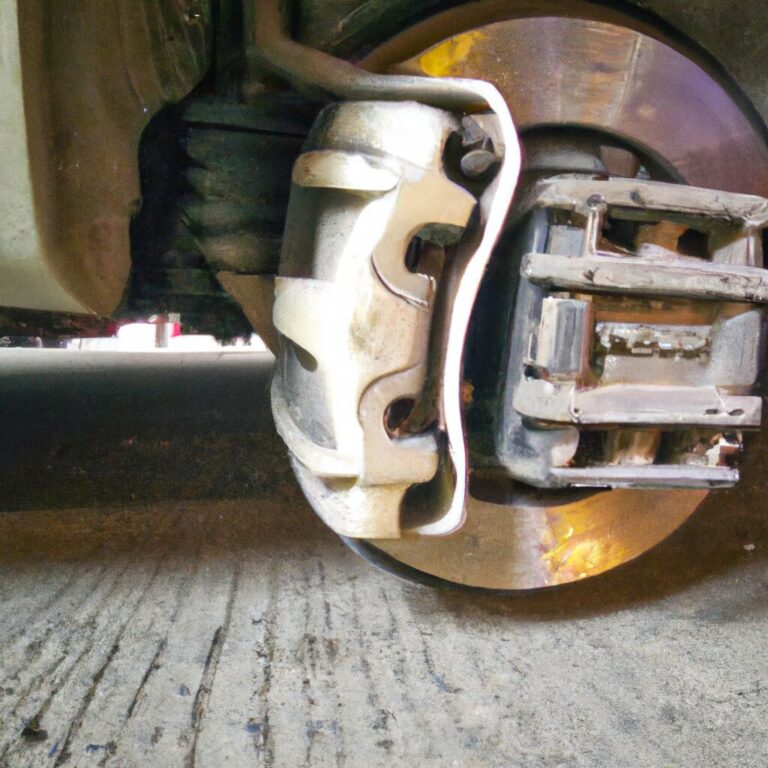Easy Diy Guide to Troubleshooting Starter Motors
Having trouble with your starter motor? Follow this easy DIY guide to troubleshooting starter motors.
Identify common issues and learn how to fix them yourself, saving time and money on professional repairs. A malfunctioning starter motor can be a frustrating problem for any vehicle owner. Whether your car engine won’t start, makes a grinding noise, or exhibits other symptoms, understanding how to troubleshoot the starter motor can help you diagnose and resolve the issue efficiently.
This guide will provide you with step-by-step instructions and tips to identify and fix common starter motor problems. By following these easy DIY steps, you can save yourself from the hassle and expense of a trip to the mechanic. Let’s dive into the essential steps for troubleshooting your starter motor.
Tools And Equipment Needed
When troubleshooting starter motors, having the right tools and equipment is essential. Let’s take a look at what you’ll need to effectively diagnose and fix starter motor issues.
Basic Tools Required:
- Screwdriver
- Socket wrench set
- Multimeter
- Jumper cables
- Wire brush
Optional Tools For Advanced Troubleshooting:
- Starter motor bench test kit
- Diagnostic scan tool
- Hydraulic jack
- Flashlight

Credit: www.amazon.com
Step-by-step Troubleshooting Guide
When your vehicle’s starter motor starts acting up, it’s essential to know how to troubleshoot the issue effectively. Follow this comprehensive guide to diagnose and fix starter motor problems step-by-step.
Checking The Battery
Begin by checking the battery to ensure it’s fully charged. Use a voltmeter to measure the battery voltage, and make sure it’s at least 12.6 volts. If the voltage is low, recharge the battery before proceeding further.
Inspecting Electrical Connections
Next, inspect all the electrical connections, including the battery terminals and the connections to the starter motor. Look for any signs of corrosion, loose connections, or damaged wires. If you find any issues, clean the terminals and tighten the connections.
Testing The Solenoid
Test the solenoid by using a screwdriver to bridge the connections on the solenoid. If the starter motor engages when you do this, the solenoid is likely the issue and needs to be replaced.
Examining The Starter Motor
Examine the starter motor for any signs of physical damage or wear. Look for frayed wires, damaged insulation, or excessive dirt and debris. If you notice any of these issues, the starter motor may need to be repaired or replaced.
Replacing Faulty Components
If you’ve identified faulty components during the troubleshooting process, it’s crucial to replace them with new, high-quality parts. Whether it’s the battery, solenoid, electrical connections, or the starter motor itself, ensure that all faulty components are replaced to restore optimal functionality to your vehicle’s starter system.
Tips And Tricks
When it comes to troubleshooting starter motors, implementing tips and tricks can make the process much smoother. By incorporating safety precautions, avoiding common DIY mistakes, and taking care of the starter motor, you can ensure efficient troubleshooting and prolong the lifespan of your vehicle’s starter. Here are some essential tips and tricks to keep in mind:
Safety Precautions
Before attempting any troubleshooting or repairs on your starter motor, it’s crucial to prioritize safety. Always disconnect the battery before working on the starter to prevent any electrical accidents. Additionally, wearing protective gloves and eyewear can safeguard you from potential injuries caused by electrical components and debris. Remember to work in a well-ventilated area to minimize exposure to harmful fumes or exhaust gases.
Common Diy Mistakes To Avoid
When troubleshooting starter motors, it’s essential to steer clear of common mistakes that could worsen the issue. Avoid overlooking loose connections or corroded terminals, as these can lead to poor electrical conductivity and starter malfunctions. Refrain from ignoring unusual sounds or grinding noises when starting the vehicle, as these could indicate underlying problems with the starter motor. Lastly, resist the temptation to overlook regular maintenance of the starter motor, as this can lead to premature wear and tear.
Taking Care Of The Starter Motor
To ensure the longevity and optimal performance of your starter motor, it’s crucial to keep it clean and free from debris. Regularly inspect the motor for any signs of dirt, corrosion, or damage, and clean it using a soft brush or compressed air. Additionally, greasing the moving parts can minimize friction and prolong the lifespan of the starter motor. Lastly, monitor the electrical connections for any signs of wear or damage, and replace them as needed to maintain reliable electrical conductivity.

Credit: www.sciencebuddies.org

Credit: www.microair.net
Frequently Asked Questions For Easy Diy Guide To Troubleshooting Starter Motors
How Do You Diagnose A Bad Starter Motor?
To diagnose a bad starter motor, listen for a clicking sound, check battery connection, inspect for corrosion, test voltage, and examine wiring for damage.
Can You Fix A Starter Motor Yourself?
Yes, you can fix a starter motor yourself. However, it requires mechanical knowledge and tools. Be sure to follow proper safety procedures and consult a repair manual or expert guidance.
How Do You Force A Bad Starter?
To force a bad starter, you can try tapping it with a hammer or using a jump start from another vehicle. Be sure to check the battery and connections first. If the starter still doesn’t work, it may need to be replaced by a professional mechanic.
What Is The Most Common Cause Of Starter Motor Failure?
The most common cause of starter motor failure is worn-out or damaged electrical components.
Conclusion
In a nutshell, troubleshooting starter motors can save time and money. Follow the DIY guide for easy fixes. Remember safety precautions and consult a professional if needed. Keep your vehicle running smoothly with these practical tips. Happy repairing!

